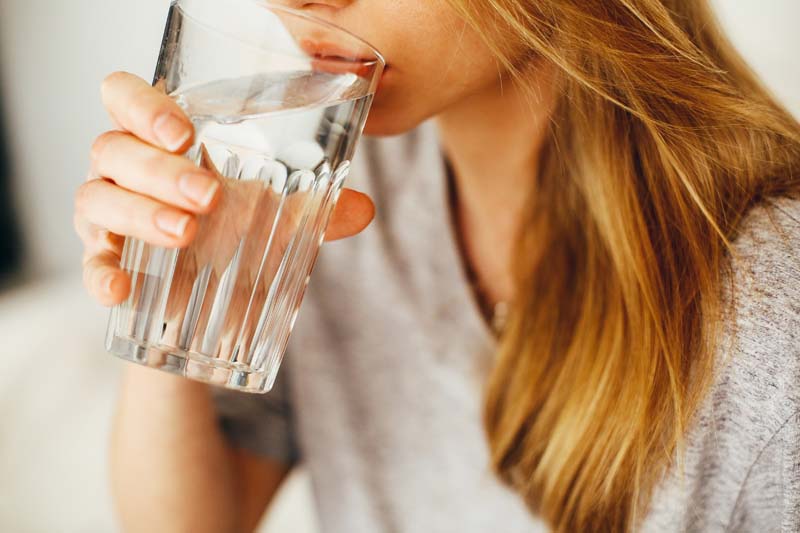What’s Cooking?

On April 6, 1938, Dr. Roy J. Plunkett made a discovery that completely revolutionized consumer plastics industry. Plunkett created the now trademarked, man-made polymer known as Teflon, or polytetrafluoroethylene (PTFE). The waxy solid was used as a stain repellent for textiles, coating for soil and — most infamously — as a coating for cookware.
That nonstick pan coating was what brought the Teflon name its most immediate household recognition but led ultimately to an endless skepticism about what is used in food preparation. As reports citing chemicals associated with the nonstick substance came out pointing out possibilities of carcinogenic properties, the fad of nonstick began to fade. As the awareness of unwanted additives in food products rises across the nation, an added skepticism in the consumer has developed. The nation is double- or triple-checking food labels and headlines for possible scandals.
But as that awareness and skepticism rises in the population, so does anxiety. It’s born from, like most anxieties, the innate human desire to understand or trust something completely. When that is left unsatisfied, such as when there is no way to fully know the ways that a product or food substance may someday harm a consumer, the anxiety is spiked. So, how can one eliminate this looming uncertainty when it comes to cookware chemicals?
It’s important to understand that while cooking, a pot or pan can introduce outside particles into the food just as other containers or packaging can contaminate food. This process of transferring particles into the food while cooking is often referred to as leaching. But this isn’t always harmful, nor is it ever entirely avoidable. Leaching happens at a greater rate with acidic foods like sauces and when cooking over a long period of time. Consider drinking red wine out of a metal or metallic glass. Often there will be a transference of the metal into acidic red wine, which is noticeable in its taste. This might ruin an expensive pinot noir, but it won’t necessarily hurt anyone.
Teflon, the nonstick agent used for cookware, has been outlawed due to its ability to transfer carcinogens during extensive preparations. Since the ability to avoid leaching completely is rather impossible, the issue of purchasing comes from a combination of least potential harm and highest durability to avoid needing to replace the pots and pans with any unnecessary frequency.
Minerals that are plentiful in the earth such as copper, aluminum, nickel and iron make up some of the other common cookware manufacturing agents. It’s cheap to utilize and thus cheaper for the consumer to purchase. But even with a need for these minerals in our bodies and environments, there can come a time when our bodies reach an unhealthy level of exposure.
Starting with unprotected copper or aluminum pots and pans, these have been linked to various blood dysfunctions and health disorders. Copper is often chosen by consumers due to its ability to heat things evenly. It takes temperatures on rapidly and allows the heat to spread out throughout the pan and thus the food. Aluminum is so abundant that it makes sense to use it almost every possible way. But both of these, when unprotected — meaning when they are not coated with another material — have been linked to overconsumption complications such as ulcers or liver damage. Nickel itself is typically used in the glazes of pots and pans and has been linked to overexposure health issues including various cancers, similar to the others.
Switching between types of cookware is the most recommended way to avoid overexposure to any one substance. But even if that isn’t an option for you or your household, there are plenty of low maintenance tools that won’t put too much into your food. Most commonly cited safe cookware are cast iron, stainless steel and coated ceramic pans.
For ages, the trusted cookware has been cast iron. The leaching from these pans is iron, a substance that our bodies need. Like any substance, of course, too much can be harmful, but for someone who is anemic, cast iron could be a good choice.
But along with the possibilities of overexposure to iron, another reason that the fad of newer pan models took cast iron’s spot in America’s cabinets was likely due to the amount of care that is needed to keep cast iron pans in quality cooking shape. Needing to be “seasoned,” or oiled frequently, many users opted for lower maintenance materials — such as the nonstick Teflon.
Seasoning the cast iron pan will give it a nice natural nonstick surface. But if it’s done incorrectly, such as with the wrong kind of oil or not frequently enough, the pan will become sticky and a chore to cook with. If you can stand the idea of maintaining your pots and pans, then cast iron is still a great option, keeping in mind that the human body can only take a certain amount of iron.
If the idea of extra steps in your cooking process isn’t for you, stainless steel or coated ceramic options are the most healthful options. Both are known for their ability to last a long time with frequent usage and to withstand acidic foods without altering the taste or chemical makeup in a harmful way.
Keeping up to date with the current studies and recommendations to ensure you and your family are healthy is not something to overlook. Awareness is essential to a healthy lifestyle. Be informed, not overwhelmed.






